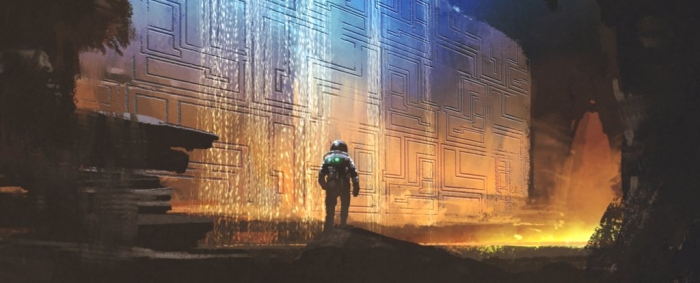But what about thousands and thousands of years from now? What will happen then? It turns out that thanks to various tools from science, a few things in the distant future can be predicted with surprising accuracy.
Based on what we know about life, the Universe and everything, some scientific predictions in fields like astrophysics and evolution can actually reach hundreds of thousands of years ahead of our time.
You can find several riveting far future timelines on Wikipedia, including one that draws heavily on sci-fi and popular fiction.
But let's have a look at what science says will happen in the nearest of these far futures - roughly 10,000 years from now.
For starters, at that point the entire East Antarctic will be no more. It's the longest continuous ice sheet on our planet, and modelling predicts that if the Wilkes subglacial basin collapses, it will take between 5,000 and 10,000 years for that gigantic ice block to dissipate into the sea, rising the water levels by 3-4 metres (10-13 feet).
There's a chance we won't have any humans left around to have to deal with all that rising seawater, though.
According to one estimate called the Doomsday argument, as proposed by Australian theoretical physicist Brandon Carter, there's a 95 percent chance that humans will have died out in 10,000 years.
That argument has been heavily debated, so we're not entirely sure if people will be around or not. But if they are, in 10,000 years there will be no regional genetic variation between humans. That's not to say people will all look the same, but whatever genetic differences there are - such as blue eyes versus brown - will be evenly distributed across the planet.
And those evenly mixed people, with vastly different shorelines from ones we know today, and with a Gregorian calendar 10 days out of sync with the Sun's position, may also be treated to a spectacular stellar explosion.
It is predicted that within the next 10,000 years the red supergiant star Antares is expected to burst into a supernova so bright it will be visible in broad daylight.
(Antares could actually burst at any moment, so we're kinda hoping it will happen sooner rather than later, so we get to see it in our skies instead of our hypothetical and possibly extinct descendants.)
Oh and by the way, if we stretch that time window to just 13,000 years, Earth's axial tilt will be reversed, flipping the seasons between the hemispheres. Now that would be confusing to live through.
But regardless of whether humans make it to the 10,000 year mark or not, the space probes Pioneer 10 and 11, Voyager 1 and 2, and New Horizons are likely to still be cruising out there among the stars not just for thousands, but millions of years.
In fact, if we squint and look just a little further into the future, 296,000 years from now Voyager 2 will actually pass within a spitting distance - in stellar terms - from Sirius, the brightest star in our sky.
All of these predictions only deal with the closest of time points in what's known as the far future, and we're already feeling pretty dizzy.
But if you want to probe these timelines even further, you can head over to the full Wikipedia timeline here. A fun spoiler before you go: it will take 1 million years until Neil Armstrong's footprint on the Moon has eroded.
More about: #Science
















































